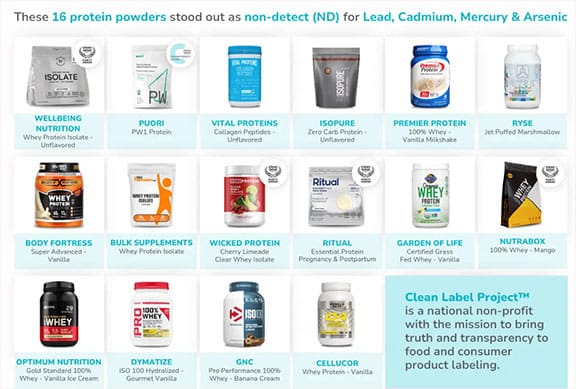Think Twice Before You Scoop: Why Many Protein Powders Aren’t as Clean as You Think
My son loves smoothies, but all protein powder is not created equally. If you’re adding protein powder to your smoothie for a health or protein boost, you might want to take a closer look at what else is coming with it. A recent study by the Clean Label Project tested 160 of the best-selling protein powders and uncovered some troubling results.
Nearly half of the products tested had dangerous levels of heavy metals like arsenic, lead, cadmium, and mercury—substances linked to serious health problems over time, diabetes, hormonal imbalances, autoimmune disease to name a few. Shockingly, 21% of the products had more than double the amount of these contaminants than what’s allowed under California safety guidelines (known as Prop 65).
What’s worse, organic and plant-based protein powders, which many consumers choose for health reasons, were often more contaminated than conventional ones. In fact, organic products had on average three times more lead than non-organic, mostly due to plant-based ingredients.
And if you’re a fan of chocolate protein powder, be extra cautious—chocolate flavors had some of the highest levels of cadmium, a toxic metal that can build up in your body over time. Some chocolate powders had 110 times more cadmium than vanilla versions.
While there’s good news—BPA, a harmful chemical once common in packaging, has dropped significantly since 2018—the heavy metal contamination is still a serious issue. With little federal oversight requiring routine testing, many protein powders on the market may not be as safe as you think. Clean Label Project listed the 16 protein powders below as clean. Autumn from Paleo Valley brought the Clean Label Project to my attention and she also has a very clean protein powder made with bone broth.

To read the full article click here, it is an easy read filled with great information.
